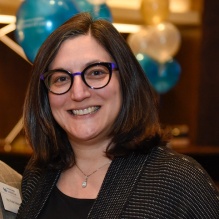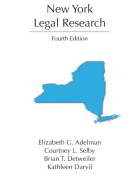A leader in legal information
Beth Adelman co-authors new book and takes on national leadership role
More than a century old, the American Association of Law Libraries (AALL) is welcoming new leadership, including one of our own.

Beth Adelman, Vice Dean for Legal Information Services and Director of the Charles B. Sears Law Library
The association comprises nearly 3,500 legal information professionals, who work in law schools, courts, law firms, and corporate settings. Its voting members selected Beth Adelman, who directs the law school’s Charles B. Sears Law Library, as its new vice president and president-elect. She will begin her yearlong term as vice president and president-elect in July 2021 and her presidency will commence in July 2022.
The AALL, headquartered in Chicago, is the association for legal information professionals. Adelman, the law school’s vice dean for legal information services, has been active in the group for two decades and has previously served on its Executive Board.
“One of the strengths of this association is its networking opportunities,” Adelman says. “Educational programming is another strength – and sometimes I learn just as much from having conversations with colleagues between programs. We benefit by learning from one another.
“I want to know what law students need to know – and that changes over time – so we can prepare them to do well in any environment. And colleagues, such as law firm librarians, want to know what we’re teaching.”

Purchase the fourth edition of New York Legal Research from the publisher, Carolina Academic Press.
The group’s next annual meeting is scheduled for July 2021, with hopes that it can be held in person, in Cleveland.
Her elevation to president-elect comes as Adelman is celebrating completion of the fourth edition of her book, New York Legal Research (Carolina Academic Press, 2020), co-authored with Kathleen Darvil, Brian Detweiler, and Courtney Selby. An update of a volume first published in 2008, the book explores the sources of New York State law and advises readers on how best to conduct research using those sources. “Each state has its own quirks and intricacies,” says Adelman, who holds a J.D. degree from Albany Law School as well as a master’s degree in library science from UB.
She says that in the fourth edition “we focused more on online resources than ever in the past. We only cover print resources where they offer an advantage. If you’re researching statutes, for example, it’s my opinion that using print resources can be the most effective way.”
Adelman wrote the first edition with colleague, Suzanne Rowe, and has taken on other collaborators over the subsequent editions. “It takes a lot more work than it looks like,” she says, “and our collaboration is really beneficial. We each take the lead on certain parts of the book, and everybody contributes feedback on substance and participates in editing of all parts of it. We’re a great team.”
“The general principles don’t change that much,” says Brian Detweiler, student services librarian at the law library, and co-author of both the third and fourth editions. “The important thing is being able to find the law and then validate it.” So, he says, much of the revision involves checking and updating web addresses and the ever-changing names and content of online sources, identifying new resources, as well as ensuring that the research processes outlined in the work are clear and accurate.
“Beth is great to work with, both on the book and here at UB,” Detweiler says. “It’s very rewarding.”